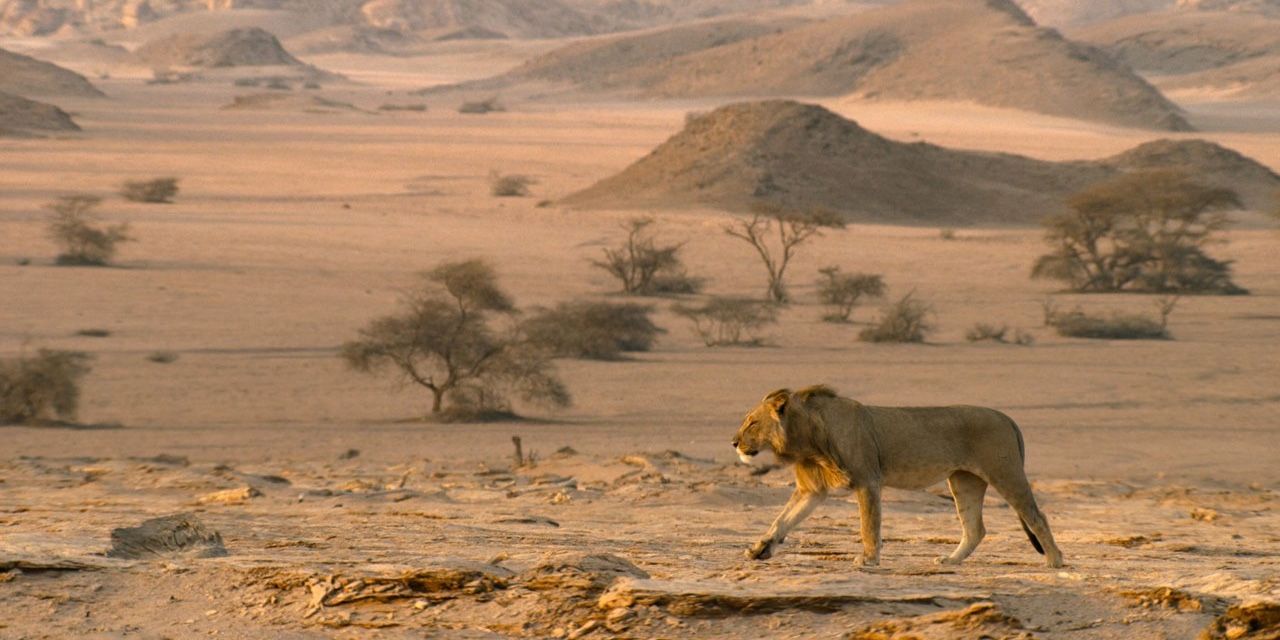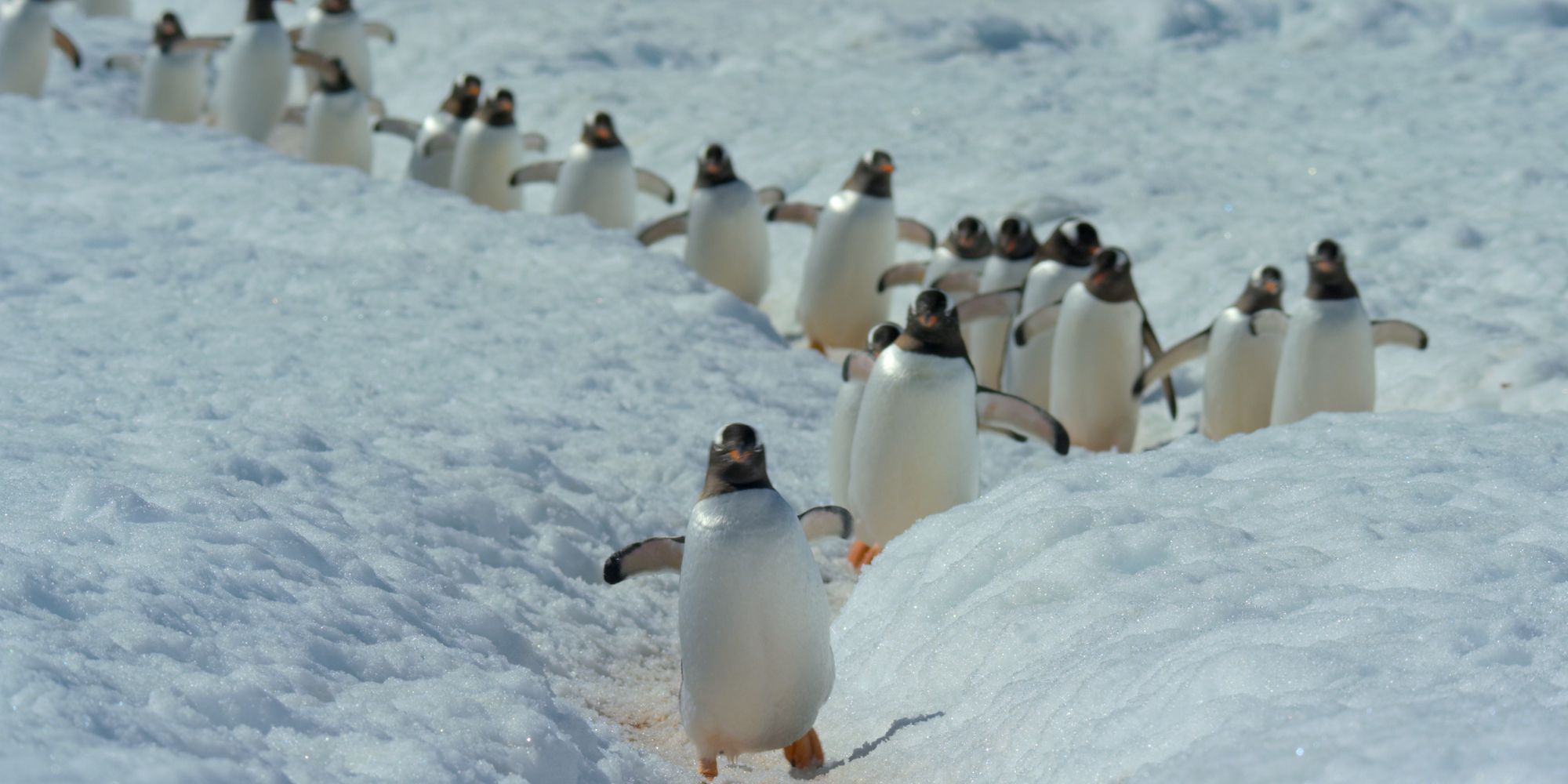Netflix released their incredible eight part miniseries, Our Planet, on April 5th after four years of painstaking work. The impressive production, narrated by acclaimed nature documentarian David Attenborough, is more than a visual feast – it’s also a cry for humanity’s help to do its part in saving the Earth. Episode after episode introduces audiences to old wonders only to show how flora and fauna alike are being eroded by the neglect or carelessness of our own society, and by the end of the series viewers will be certain to want their do their part to preserve more of our planet’s beauty.
In that vein, award-winning executive producer Keith Scholey and cinematographer Jamie McPherson sat down to discuss why Our Planet was such an important endeavor and what each of us can do to the converse the natural beauty of Earth a little longer.
The series is so straight forward about its intention, which is that we need to protect the planet and we need to ensure that these various species don’t become extinct. So I was just wondering what are some things that you think viewers can do immediately to help preserve nature?
Keith Scholey: What we have with the series is an amazing online site called ourplanet.com, which is designed really to answer this question in quite a lot of detail. But in short, how we as individuals consume stuff has a huge impact on our wildlife, and food is a big, big issue. And if people think carefully about how much meat they eat, whether they eat seasonal food that doesn’t have to be transported across the world, and all these little things, it’ll put far less pressure on nature.
That makes sense. Now, Jamie, some of the shots – such as in the ants’ nest – are so amazing, I can’t even imagine how they’re taken. How do you set them up and how long does it take to get the right kind of footage?
Jamie McPherson: I didn’t shoot that one specifically, but each shoot varies from maybe two weeks for the short ones to maybe seven weeks if you go somewhere remote like the Antarctic or Russia. Because you’ve got a week or so to go either way. It’s a shoot by shoot basis, really. But we have the latest tech that we use to get the cameras in close, so we’re not disturbing the animals but we are capturing behavior that people haven’t seen before hopefully. And telling these stories that get people excited.
How long does it take to figure out where to put hidden cameras and how to make sure they’re perfectly camouflaged?
Jamie McPherson: There was some remote cameras in episode one, I think. And they’re working with experts who know the tracks. There was some leopard footage, this amazing footage, that was captured by those cameras while working with experts who know the route of the animals. They can put the cameras in the right place, and then it’s just a matter of waiting weeks and sometimes months for them to pass by and to get the shots we need.
Keith, you’ve collaborated before with David Attenborough, and he’s also listed as writing the foreword for the Our Planet companion book. How actively involved is he in the process?
Keith Scholey: My co-partner and I, we’ve worked with David since we were in our early twenties, so we go back a long, long way. And when we started this project, we very much wanted David to be part of it, and he agreed. His main role on this series is about the narration. He doesn’t come on vacation much these days because he is 92, but he’s one of the most skillful screenwriters and he’s an incredibly skillful narrator. So basically he has a huge impact into the script. We always draft scripts for him, and then he spends a lot of time working on them. And then of course the delivery, we very much leave to him. So he’s really part of the story and part of the narration on Our Planet.

Speaking of the story, it feels like the series is broken up into very complete arcs for different locations and different species. Do you go out on location with a plan for what footage you’re going to capture? Or do you let it run for as long as you’re there and see what kind of story you get?
Keith Scholey: No, absolutely. Our process is, we do a lot of research at the start of a series and really try and look for key stories. And in Our Planet, we didn’t want just a good animal story. We wanted stories that resonated with the environmental crisis. So each story has to tell or show you a nice wildlife sequence, but also have a bigger message. So we look really, really hard for that [message], and then we look for the best location to film it. We try to get in touch with scientists to get as much detail, and then we set off. There’s no doubt, though, when you turn up, it’s never quite as you expected. And that’s when I guess the wildlife filmmaking skills kick in. You have your plan, and then reality hits you. And you do the best you can with the situation you have to tell that to tell that story.
Are there any specific moments you recall of trying to get one story that ended up being very different?
Keith Scholey: I don’t think so, no. I think by and large on this one – we had some shoots that failed. That it just didn’t work out, you know, the weather was wrong or the event we were trying to film didn’t quite come off. But by and large, the things that we went for is what went into the series.
That’s great. I know that Silverback has done several nature-related documentaries, but this is the first one that you guys have done with Netflix, right?
Keith Scholey: It is indeed. We got together with Netflix, I think is was way back in 2014, and hit it off with them straight away. We both shared the ambition to make a big wildlife series which had an environmental message. So that’s the first we’ve ever done, and it’s been a great experience.
That’s wonderful to hear. Did they give you as much creative freedom as you wanted, or were there certain rules in place that you had to follow?
Keith Scholey: If you’re gonna make wildlife documentary, if you’re going to make documentary television right now, they give you more space than anyone else in the industry in my experience. They always said at the start, ‘We’re very light touch. We want you as the filmmakers to create what you want to create. We like your work.’ And then they remained completely true to that throughout. But they have very, very good editorial people who give you really good feedback and with whom you can bounce things off. So they have a huge impact on the creative process, but it’s very much a partnership and we’ve enjoyed that.
Jamie, what are some of the scenes or shoots you worked on that were most memorable to you or that you feel proudest of?
Jamie McPherson: I’d say the wild dog sequence from episode one was one of the most amazing creatures to film – the most dynamic, and very difficult to film. So for that sequence, we took the camera from a helicopter and rigged it to a four-by-four, so we could be with the pack of wild dogs while they’re hunting. So you have to drive it 40 miles an hour, and it’s a very long way to travel over very rough ground. So when you start to build the story and see the character, it’s very satisfying to see how that all works and comes together.

Are there any concerns about safety on set? Any precautions that you have to take to make sure that the crew is safe, or even that the animals are safe?
Jamie McPherson: Yes, although the animal are fine. I’ve been doing this for 20 years, so you spend a lot of time in the field, you’ve got a lot of field craft and you’re working with experts. We worked with polar bears a lot and, on the face of it, they seem dangerous. But if you understand polar bears and you can read them, you know they’re not dangerous at all. We’re always watching the animals and spending a lot of time not disturbing them, not getting too close, because we need to see natural behavior. So you generally don’t feel unsafe at all.
One of my favorite moments in the early episodes was the birds who are trying to woo their female counterparts, because it really felt like a high school drama playing out. Are there any other animal behaviors you witnessed that you relate back to human experiences?
Keith Scholey: I think there are a lot throughout this kind of series. We always try in each program, we always try to have one sequence that really is amusing and emotional. I don’t know if you’ve seen the Jungles episode, but in that there’s an incredible bird of paradise that does the most complex dance in the animal world. And it’s absolutely hilarious, he’s got to do about eight or nine set piece moves and he’s got to get it perfectly right. And the female’s sitting above him watching every little and judging whether he’s good enough. It’s a fantastic sequence.
Obviously what we want to do with the series is get people to love nature. It’s really important that we get them to understand the diversity of nature, which has incredible things in it. And so one reason for protecting nature purely is to keep these incredible creatures. Obviously now there’s a bigger reason to keep nature, because as it’s breaking down, it’s starting to threaten our own existence. So there are kind of two sides to Our Planet.
What are some species that you witnessed during the course of the documentary that you think that humans can learn from or that they could use to improve their own interactions with the environment?
Keith Scholey: Well, it’s interesting. Nearly everything boils down to giving animals space. A huge part of most natural systems is, if you give it the space and you leave it alone, the animals get on with it and it all kind of bounces back. I think if there’s a real lesson from this, it’s that if in doubt, just try and leave alone. One of the biggest examples in our open ocean film is we take the example of the great whales. I got into this business in the early eighties when we thought the whales were going to go extinct because they were being hunted. Then the world decided they were going to internationally protect whales, and now some of the populations like humpbacks are getting back to their original state. It’s an amazing example of how if we just agreed to do some simple things, you can fix this stuff.
More: What To Expect From Our Planet Season 2




